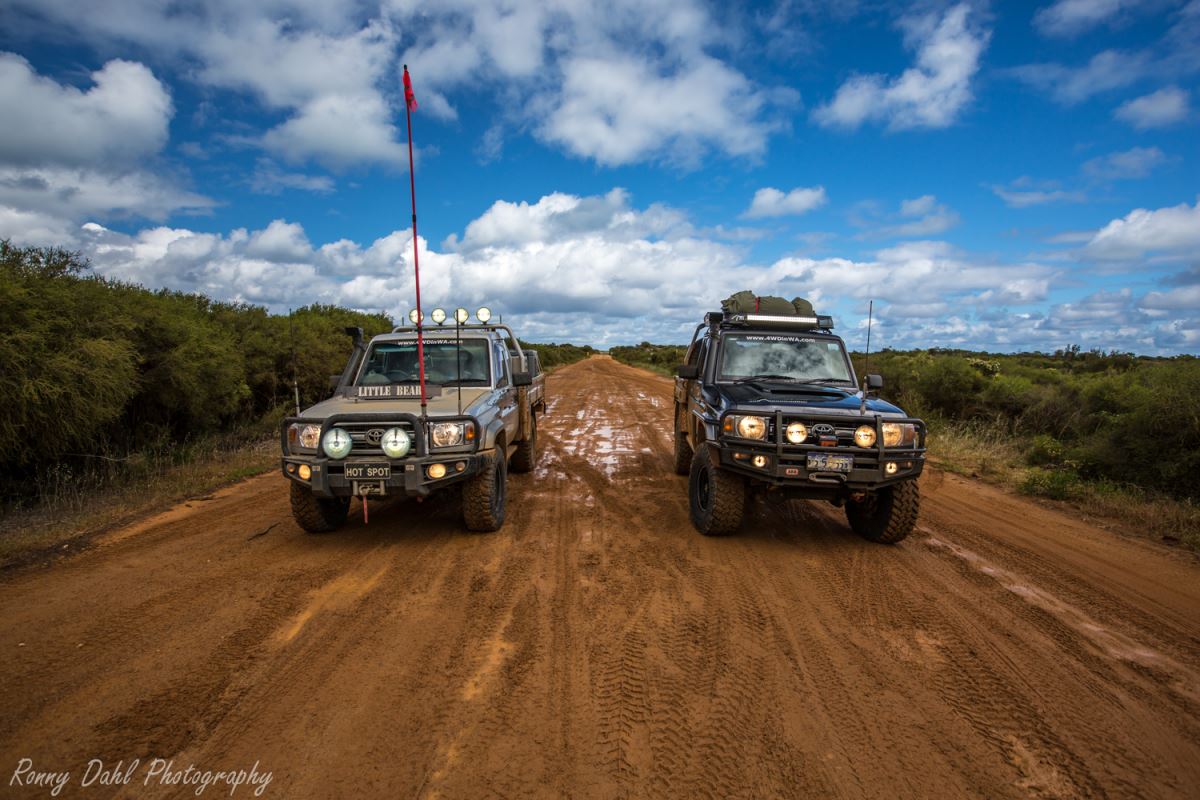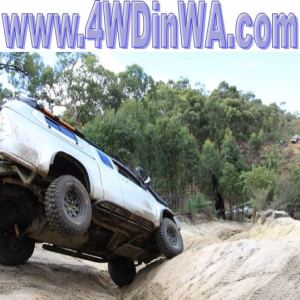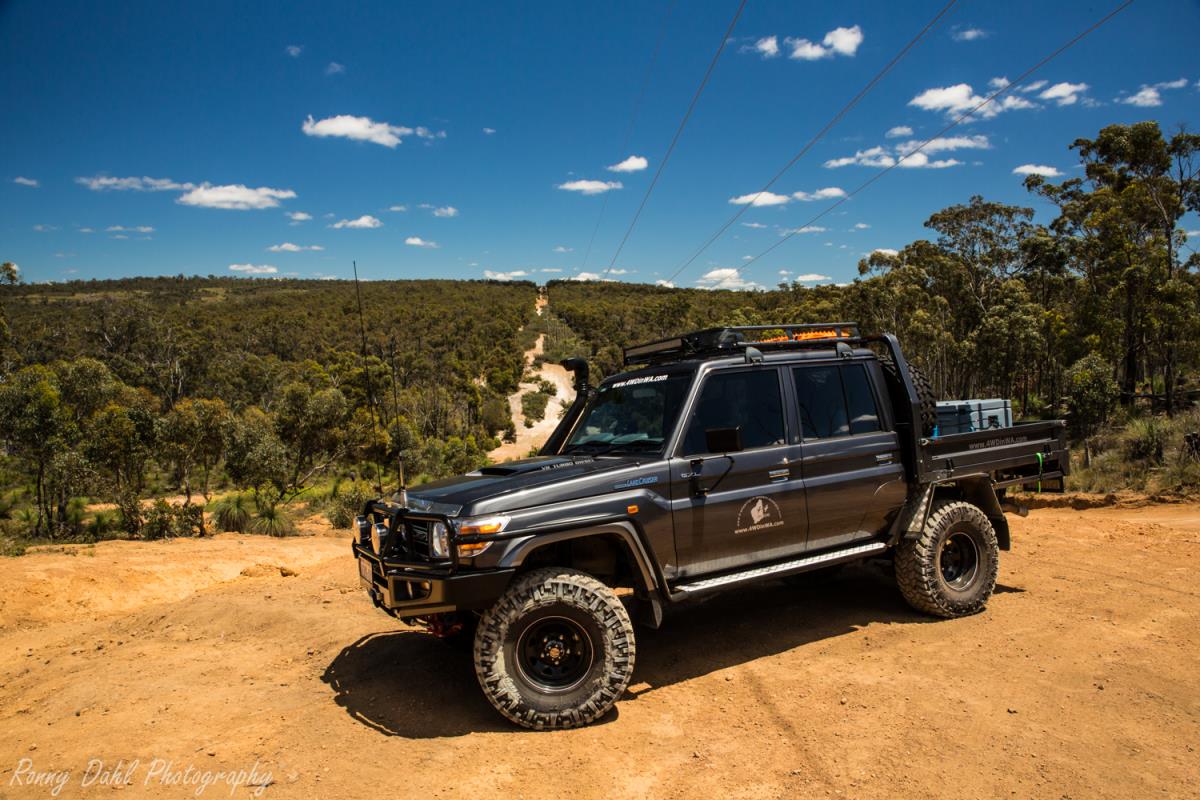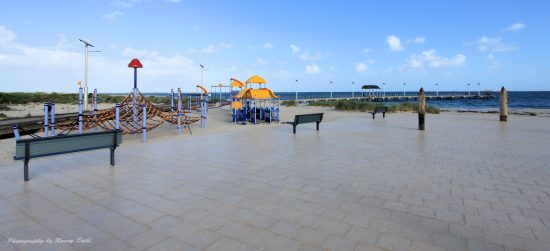
General Gravel roads & Outback Red Dirt tracks.
Bull dust, harsh jagged rock Gravel Tracks and Corrugations.
General Gravel Tracks:
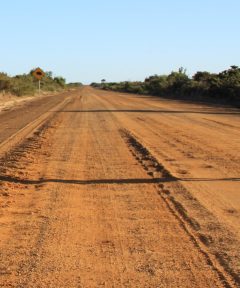
Most gravel roads are well maintained roads, however shortly after bad weather it's best to keep a keen eye out for wash-aways (when a large amount or water has traveled across or sometimes under the road corroding/carving a path through it, causing large pot holes and trenches), these can really catch the unexpected by surprise.
If travelling for a short distance between Tarmac roads, it is not really worth
getting out and airing down, however it’s always best to engage 4 wheel drive
to benefit from the extra traction.
If coming off a dirt track or sand track and PSI is already lowered keep in
mind that speed with low PSI will damage the tires from the inside so keep the
speed under 60kph or inflate the tires.
Travelling in convoy on dry dusty gravel tracks, it would be best to keep a good
distance from each others, two reasons it will help your visibility clear and
help keep the 4x4's paint work intact.
Outback Red Dirt tracks:
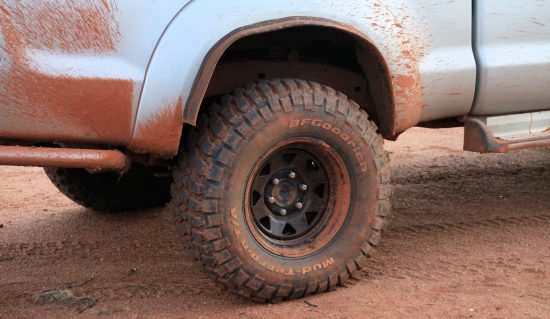
These roads/tracks come in combination with bull dust, harsh jagged rock gravel roads, bone jarring corrugations and red mud in heavy down pours. These less travelled tracks are often not maintained very well if at all, if passing by other travelers exchanging track information is a great idea.
It's best to keep a keen eye on the track to spot any pot holes, washouts or other things that may be blocking the path.
Bull dust:
This is the thinnest dust you will encounter; usually found on clay tracks or in the outback, it gets in everywhere.
Make sure you close the vents and keep the air con on recycle; this should prevent
dust from entering.
Keep a good distance from other vehicles ahead on the track to keep your visibility and for the 4wds sake as even with a snorkel this dust will make its way through to the air filters quite easily.
When coming to a stop try not to open the doors for a few minutes just to let
the dust pass by.
The dust falls into holes and makes them look level with the ground, so do take
care when hitting patches of bull dust as there could be hidden pot holes and
trenches, at speed this could really do some damage. You will notice when
hitting a big bull dust section as it makes a soft powdery noise and will feel
a bit like hitting a puddle of water to a degree.
Single Cab & Dual Cab 79 Series Land Cruiser Rock.
Harsh jagged rock gravel roads:
This type of terrain is kind of similar to pea gravel except two-three times bigger and jagged, reducing tire pressures in these conditions would be very wise. It really doesn't take much to shred a tire with high PSI.
Along with the same info on General Gravel Roads section above, keep a lookout
for wash outs and keep a good distance from the next vehicle ahead to improve
visibility.
Never expect these roads/tracks to be well maintained as some are only used now
and again.
Corrugated roads:
This is common on unsealed roads, this includes: gravel roads, sand tracks, lime stone tracks, outback roads and dirt tracks.
Some roads are so bad that some people have actually turned around and given
up, some corrugated roads can be so harsh that they break CB aerials, shock
absorbers and loosen bolts.
For more information see: Corrugated roads.
Red mud in winter/heavy down pours:
When rain mixes with red dirt and bull dust it gets very slippery and where the water pools on the low parts of the tracks it can turn into a mud pool.
These mud pool are best navigated by going straight though the middle as that's
where most of the traction is. Going around the sides (if both sides a wet) can
be worse.
The middle of the track has traction at the bottom as the surface mud
has already been carved out (well more than the sides), the untouched sides
will have a thick layer of mud that will more than likely fill the tire tread
with loads of mud turning them into slicks. Racing slicks in mud will just spin
and so will All terrains tires filled with mud, mud terrains on the other hand
have a chance to rid of the mud with its aggressive pattern flicking mud out of
the tread.
(SEE MUD and clay based terrain for more details)
Tire pressures:
Driving on any terrain, tire PSI is the most important part when it comes to actually getting anywhere.
If the pressure is too high the vehicle will struggle to move due to wheel spin, feel more bumps, and wear the clutch and other components.
Best tyre pressures for your 4WD will be different to the next person’s 4WD.
Mud terrain and all terrain is on par in corrugations and gravel roads. On jagged
rocks the mud terrain tire will have strong side walls to protect against sharp
rocks trying to slice your sidewalls. If wet and muddy, the obvious best tire
is the Mud terrain.
The following chart is an approximate recommendation for tyre PSI:
General gravel roads: 35-highway pressures
Jagged rocks: 16-24
Don't use too low pressures as tires are very easily pop off the rim in ruts,
and don't use too high pressures as tires are then more prone to damage and
punchers.
Recent Articles
-
Goodyear wrangler MTR
Jun 28, 24 10:27 PM
I have these on my defender 90 and my Dmax Ute. I get around 100,000 km out of them. I tried AT for one change and went back to the MTs. They are gol -
4x4 off road tracks 0 to 250 km from Perth
Nov 21, 23 07:40 PM
On this page we cover 4x4 off road tracks within a 250 km radius from Perth... -
4 Wheeling Around Jurien Bay.
Nov 21, 23 07:35 PM
Jurien Bay 4x4 tracks info and general information about the area...
- Home
- Terrain Conquering
- Gravel Roads
Leave Gravel Roads And Go To Home Page.
